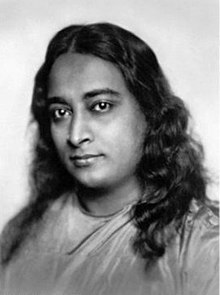imported>Chunbum Park |
imported>John Stephenson |
| (235 intermediate revisions by 8 users not shown) |
| Line 1: |
Line 1: |
| {{Image|Muncprotein.jpg|right|175px|Inman M ( ) Shape of a common protein module suggests role as molecular switch.}} | | {{:{{FeaturedArticleTitle}}}} |
| '''[[Macromolecular chemistry]]''' is the study of the physical, biological and chemical structure, properties, composition, and reaction mechanisms of [[macromolecules]]. A macromolecule is a molecule that consists of one or more types of repeated 'building blocks'. The building blocks are called [[Monomer|monomeric unit]]s (monomers).
| | <small> |
| | | ==Footnotes== |
| Macromolecules (also known as polymer molecules) appear in daily life in the form of [[plastic]], [[styrofoam]], [[nylon]], etc. These [[polymer]]s, i.e., substances consisting of polymer molecules, are of great technological importance and are used in the manufacturing of all sorts of goods, from automobile parts to household appliances. The artificial polymer molecules usually exist of long repetitions of identical monomers, either in chains or networks.
| | {{reflist|2}} |
| | | </small> |
| In molecular biology macromolecules (biopolymers) play a very important role: the well-known molecules [[DNA]], [[RNA]], and [[polypeptides]] ([[proteins]]) are examples of macromolecules. In molecular biology one is mostly interested in macromolecules in solution, usually dissolved in water. The biological function of macromolecules in living cells is a highly relevant and widely studied topic of research. Although, strictly speaking, biopolymers belong to the class of polymer molecules, there is a tendency not to use the latter name in biological applications, but to speak of macromolecules. The term "polymer" is usually reserved for the substances manufactured in bulk by the chemical industry.
| |
| | |
| In industry, the value of synthetic macromolecules as plastics and nylon, has risen enormously over the last 60 years. They have made it possible to mould shapes that would have been impossible to create without them. When they were first developed, their resistance to rupture and degradation was seen as a profound advantage, but nowadays we seek more biologically degradable plastics such as polyethyleneglycol that pollute the environment less.
| |
| | |
| Biological macromolecules include, besides the molecules already mentioned, [[enzyme]]s, and [[polysaccharide]]s, such as cellulose and starch. The better understanding of the basic behavior of polymer molecules has enhanced our knowledge of these biological molecules, and studies of partially charged [[polyelectrolytes]] have led to a deeper insight into their biological function. The investigations of the three-dimensional structure of macromolecules, (their [[configuration]] and [[conformation]]), have led to the identification of specific regions that perform specialized activities. A good example is the catalytic role of particular amino acid residues in polypeptide enzymes and the role of [[functional group]]s such as [[biotin]] or [[riboflavin]] in cellular metabolism. The folding of macromolecules is now a topic of much scientific investigation, since the correct folding of these polymers is a critical factor for normal function. Abnormal folding of particular proteins is the cause of several diseases, including [[Alzheimer disease|Alzheimer's]] and [[Creutzfeldt-Jakob disease]] (CJD) .
| |
Latest revision as of 09:19, 11 September 2020

Paramhansa Yogananda circa 1920.
Paramhansa Yogananda (5 Jan 1893–7 Mar 1952) was one of the first Indian teachers from the Hindu spiritual tradition to reside permanently in the West, and in particular, he was the first to teach yoga to Americans. He emphasized the universality of the great religions, and ceaselessly taught that all religions, especially Hinduism and Christianity, were essentially the same in their essence. The primary message of Yogananda was to practice the scientific technique of kriya yoga to be released from all human suffering.
He emigrated from India to the United States in 1920 and eventually founded the Self-Realization Fellowship there in Los Angeles, California. He published his own life story in a book called Autobiography of a Yogi, first published in 1946. In the book, Yogananda provided some details of his personal life, an introduction to yoga, meditation, and philosophy, and accounts of his world travels and encounters with a wide variety of saints and colorful personalities, including Therese Neumann, Mohandas K. Gandhi, Luther Burbank, and Jagadis C. Bose.
Paramhamsa, also spelled Paramahamsa, is a Sanskrit title used for Hindu spiritual teachers who have become enlightened. The title of Paramhansa originates from the legend of the swan. The swan (hansa) is said to have a mythical ability to sip only the milk from a water-and-milk mixture, separating out the more watery part. The spiritual master is likewise said to be able to live in a world like a supreme (param) swan, and only see the divine, instead of all the evil mixed in there too, which the worldly person sees.
Yogananda is considered by his followers and many religious scholars to be a modern avatar.
In 1946, Yogananda published his Autobiography of a Yogi. It has since been translated into 45 languages, and in 1999 was designated one of the "100 Most Important Spiritual Books of the 20th Century" by a panel of spiritual authors convened by Philip Zaleski and HarperCollins publishers.
Awake: The Life of Yogananda is a 2014 documentary about Paramhansa Yogananda, in English with subtitles in seventeen languages. The documentary includes commentary by George Harrison and Ravi Shankar, among others.[1][2]
